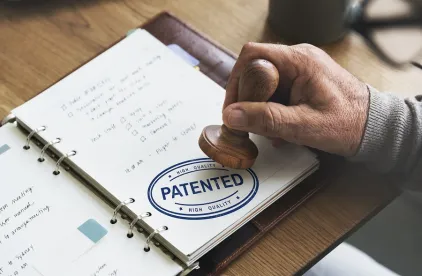In a pair of decisions handed down on the same day by Chief Judge Prost, the US Court of Appeals for the Federal Circuit struck down a raft of claims on the basis of various doctrines, including patent ineligibility, collateral estoppel and standing. Intellectual Ventures I LLC v. Capital One Financial Corp., Case No. 16-1077 (Fed. Cir., Mar. 7, 2017) (Prost, CJ); Intellectual Ventures I LLC v. Erie Indemnity Co., Case No. 16-1128 (Fed. Cir., Mar. 7, 2017) (Prost, CJ).
The cases involved overlapping patents related to data filtering and processing, three of which the Federal Circuit discussed from a technical point of view. Two of those patents related to XML technology, a flexible mark-up language used for formatting documents and tagging databases, and covered claims related to editing XML documents in a way that resolved cross-system compatibility issues and filtering XML tagged databases. The final patent covered a file bookmarking system that allowed users to quickly access their bookmarked files across different machines. The Court invalidated all three patents (over both cases) under § 101.
Regarding the two XML patents, the Federal Circuit found that they were both directed to the abstract ideas of data manipulation and data filtering, each of which had already been held to be abstract in previous cases. Intellectual Ventures (IV) argued that even though the patents were directed to those abstract ideas, limitations directed to XML implementation did “significantly more than simply describe [the] abstract method” and thus rendered the claims patent eligible under the second step of the Alice test. The Court disagreed, concluding that the patents provided little in the way of technical detail and that a limitation to a specific technical space was insufficient to meet the Alice step two test.
The Federal Circuit similarly struck down the IV patent related to file bookmarking, which focused on a “mobile interface” that allowed a user to access bookmarks across machines. The Court found that the mobile interface lacked technical detail, and as such the patent did not disclose significantly more than the abstract idea of “remotely accessing user specific information.”
In the Capital One case, IV asserted a patent that was also involved in a lawsuit in the Southern District of New York. The district judge in the New York case issued a summary judgment finding the patent directed to ineligible subject matter under § 101. This judgment prompted the Capital One district court to decide that IV was collaterally estopped from pursuing those claims in the Capital One case. IV appealed, arguing that collateral estoppel does not attach until final judgment is entered and the appeal process has run its course. The Federal Circuit upheld the district court’s decision, relying on Fourth Circuit law, which espouses a flexible test whereby collateral estoppel is triggered when “the litigation of a particular issue has reached such a stage that a court sees no really good reason for permitting it to be litigated again.” Finding that the same § 101 issues had already been finally adjudicated in the Southern District of New York case, the Federal Circuit found that there was “really no good reason for permitting it to be litigated again,” and therefore proceeded to simply review the § 101 issues presented.
In the Erie Indemnity case, the Federal Circuit affirmed the district court’s dismissal of IV’s asserted claims based on standing and its grant of defendants’ R. 12(b)(6) motion based on § 101. The standing issue related to a patent transfer earlier in the chain of title. The contract covering the transfer specifically listed certain patents, including the parent of the asserted patent, as well as certain of the parent’s foreign counterparts. The grant did not expressly list the asserted patent, but did include a more general grant of “all right, including common law rights, title and interest in the United States of America . . . in and to said patents together with the goodwill of the business symbolized by said patents and applications and registrations thereof.” IV argued that this general grant was sufficient to transfer the asserted patent, or in the alternative, that the contract should be construed that way based on the later behavior of the parties. The Court took a narrower view of the contract, finding that the general grant was limited to the specifically listed patents, and that the contract was not ambiguous enough to justify bringing in extrinsic evidence, such as the behavior of the parties.




 />i
/>i

